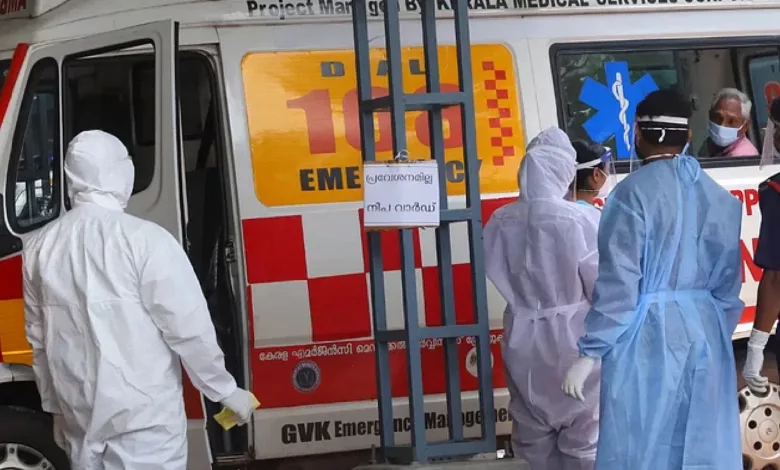No new cases, Kerala ends Nipah-related restrictions in Kozhikode

No new cases, Kerala ends Nipah-related restrictions in Kozhikode
The Kerala government has lifted all Nipah-related restrictions in the containment zones of the northern Kozhikode district as there have been no new reported cases of the virus since September 16. This is a positive development indicating that the outbreak appears to be under control in those areas.
However, the government has advised people to continue following COVID-19 safety measures, such as wearing masks, using sanitizers, and maintaining social distancing. These precautions are still relevant in the ongoing pandemic situation.
While Nipah-related restrictions have been lifted, the government has chosen to maintain restrictions on public gatherings and crowding until October 26. This cautious approach aims to prevent any potential resurgence of the virus and to ensure the safety of the public.
The District Collector of Kozhikode, A Geetha, announced in a Facebook post that all schools located in containment zones in the district would reopen, and regular classes would commence on the following day. These schools had been closed since September 14 due to the Nipah virus outbreak. During the closure period, online classes were conducted as a precautionary measure.
As schools resume regular classes, the district administration has advised students to continue following COVID-19 safety measures. This includes wearing masks and carrying hand sanitizers when going to their respective educational institutions. These precautions are in line with efforts to prevent the spread of infectious diseases, including both Nipah and COVID-19, while ensuring that education can resume in a safe manner.
The decision to reopen schools in containment zones suggests that the authorities are confident that the situation related to the Nipah virus is under control in those areas. However, continued vigilance and adherence to safety guidelines remain essential to prevent any potential resurgence of the virus.
The Nipah virus outbreak in Kozhikode, Kerala, has affected a total of six individuals, with two fatalities. The first person who succumbed to the virus on August 30 was identified as the index case, meaning they were the initial patient from whom others subsequently contracted the infection. This index case plays a crucial role in understanding the source and transmission of the virus.
As of September 24, health authorities reported that 915 people were under observation due to potential exposure to the virus. However, it’s reassuring to note that none of them were classified as being in the high-risk category. This suggests that containment measures and surveillance efforts have been effective in preventing further spread of the virus to individuals at higher risk.
Health authorities will likely continue to monitor the situation closely and maintain vigilance to ensure the outbreak remains under control. It’s important for the public to follow recommended safety measures and guidelines to prevent further transmission of the virus and to protect the health of the community.
As of the provided information, a total of 377 samples had been tested for the Nipah virus, with 363 of them yielding negative results. This suggests that the majority of individuals tested did not have the virus, which is a positive sign in managing the outbreak.
The health department also mentioned that the incubation period for a Nipah-infected person is typically 21 days. However, to ensure the community is entirely free from the outbreak and to take extra precautions, double the incubation period (42 days) is considered crucial. This means that the 42-day mark since the test result of the last infected person turned positive is significant in determining when it can be confidently stated that the outbreak has been contained and the community is safe.
This cautious approach aligns with public health measures to prevent any potential resurgence of the virus and to protect the well-being of the population. It underscores the importance of continuous monitoring and adherence to safety protocols during and after an infectious disease outbreak.






